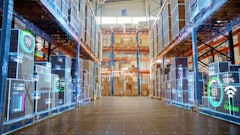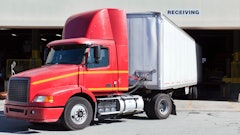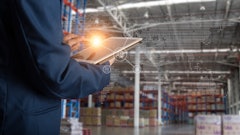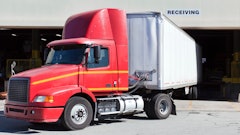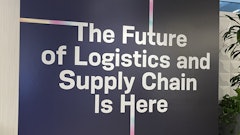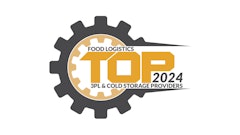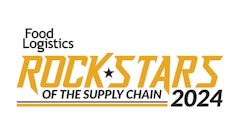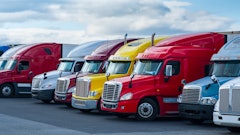These are tumultuous times in food and beverage distribution, particularly for midmarket broadline distributors and smaller niche providers of specialty food items. The industry is being pushed and pulled in multiple directions by diverse forces —demanding consumers, increasing product variety, market consolidation, regulatory requirements and new technologies.
Amid these dynamics, greater precision and cost-efficiency are prerequisites for smaller and midmarket firms to survive and prosper. Distributors need real-time visibility into time-sensitive inventory to control costs and solid information to improve demand planning. Heightened agility is needed to innovate and capitalize on new opportunities swiftly and cost-effectively.
Collaborative digital environments are required for distributors to communicate across a range of stakeholders that include internal personnel, as well as suppliers and B2B customers, from supermarkets and convenience stores to restaurants and institutional food service operators. The advent of Internet of Things (IoT) data are opening new opportunities for distributors to reduce costs and run a smarter, faster business.
Those objectives are difficult to achieve for food and beverage distributors that continue to plug along on outdated business systems and processes that are well beyond their shelf life. Reliance on Microsoft Excel, emails and standalone applications that don’t talk to each other, limits business visibility and responsiveness. The result can be high costs, delays and subpar customer service—a recipe for failure in a fast-changing industry.
Amid market pressures and volatility, superior data management and process coordination are key ingredients for business transformation. Food and beverage distributors substantially improve agility and performance when they centralize and control growing volumes of data across the supply chain and product, sales, customer, supplier and financial areas.
As it is, much of that data often are scattered across multiple buckets. A data-centric approach to systems modernization positions distributors to nurture their core strengths of expertise and customer service while addressing a host of challenges, including:
-
Increased variety and demand volatility. Consumers enjoy more food and beverage choices than ever. And demand is rising for foods labeled as organic, non GMO, gluten- and pesticide-free, and other natural characteristics, as well as ethnic and artisanal foods. Distributors are challenged to optimize complex and growing SKU volumes, and to fine-tune demand planning by geography, demographics, seasonality and more.
-
Food safety and traceability. Distributors face an increasingly tough challenge with regulations, such as the Food Safety Modernization Act in the U.S., and industry efforts like the GS1 Standards Initiative. Transparency and lot traceability are essential, especially if a distributor needs to respond to a recall alert with information on when and where a product was sold, and how much remains in transit or in stock.
-
Market consolidation. With rapid consolidation among food manufacturers and distributors, independent wholesalers cannot afford to sit idly by. Competing effectively requires innovations to enhance customer interactions and traditionally high service levels. Systems modernization also helps distributors shave time and money from processes while protecting margins threatened by economies of scale.
-
Complex trade promotions. Deviations and rebates in food distribution and depletion allowances on the beverage side are growing more complex as suppliers and retailers scramble for the consumer dollar. Distributors need transparent, real-time processes to manage these trade promotions, facilitate customer pricing and vendor chargebacks, and ensure the bottom line doesn’t suffer.
These new pressures are outstripping the capabilities of many existing systems, whether a collection of QuickBooks and standalone inventory and CRM applications, or an enterprise resource planning (ERP) solution deployed years ago on an on premise server. Typical weaknesses include poor flexibility, difficult upgrades and high information technology (IT) maintenance costs.
An Integrated Approach to Food Distribution
As in other distribution sectors, progressive food and beverage distributors are turning to cloud-based ERP to synchronize their many moving parts, from inventory and order management to product sourcing and tracking, warehousing, sales, financial management and analytics, and e-commerce with B2B buyers.
“Wholesalers and distributors need ERP solutions that support visibility, collaboration and agility over wide geographic networks,” says the analyst firm Aberdeen Group in a report. “In these cases, cloud ERP provides a compelling option.”
Cloud ERP as an integrated suite delivers real-time visibility into all aspects of the business, promoting efficiency and data-driven decision-making. Those capabilities help food and beverage distributors with more informed demand planning and managing large and diverse SKU populations. Lot tracking provides transparency into a product’s full lifecycle to support food safety compliance and recall readiness.
Extending to the warehouse, cloud ERP automates workflows and speeds processes with bin management, pick, pack and ship capabilities, and mobile barcode scanning. Sales managers have a 360-degree view of each customer’s interactions to strengthen relationships, while customers benefit with a B2B portal for online ordering and account management.
Free Flow Wines is a good example of a food and beverage distributor that has innovated and grown with cloud ERP. Headquartered in Napa, California, Free Flow Wines has pioneered the use of reusable stainless steel kegs to store and pour wine. Working with hundreds of wineries and logistics partners, Free Flow Wines supplies premium kegged wine to thousands of restaurants, hotels and casinos.
Investing in Innovation
Free Flow Wines uses cloud ERP to manage the status, delivery, returns, cleaning and reuse of more than 85,000 company-owned kegs that circulate between Free Flow and wineries, logistics partners and restaurants. Unable to find software purpose-built for tracking returnable assets, Free Flow took advantage of cloud ERP flexibility and bar code scanning to build in custom workflows and data tracking that met its unique needs.
Besides keg tracking, cloud ERP powers financials, inventory management, assemblies and B2B e-commerce for Free Flow Wines. Replacing QuickBooks in 2012, the solution has enabled breakthrough efficiencies across the company, and supported rapid triple-digit revenue growth. That aligns with Free Flow Wines’ value proposition of sustainability, avoiding use of millions of disposal bottles and reducing the carbon footprint of wine distribution by 95 percent.
“Cloud ERP has definitely given us the scalability for rapid growth,” says Jordan Kivelstadt, Free Flow Wines founder and CEO. “We can focus on what we do best in kegging premium wine rather than manual work with orders, inventory and accounting."
As food and beverage distribution continues to undergo radical changes, small and midmarket distributors will rise or fall based on their business agility. The changing food landscape will punish those that are ill-prepared to adapt, and reward those forward-thinking companies that utilize technology to gain both tactical and strategic advantages against larger rivals.





